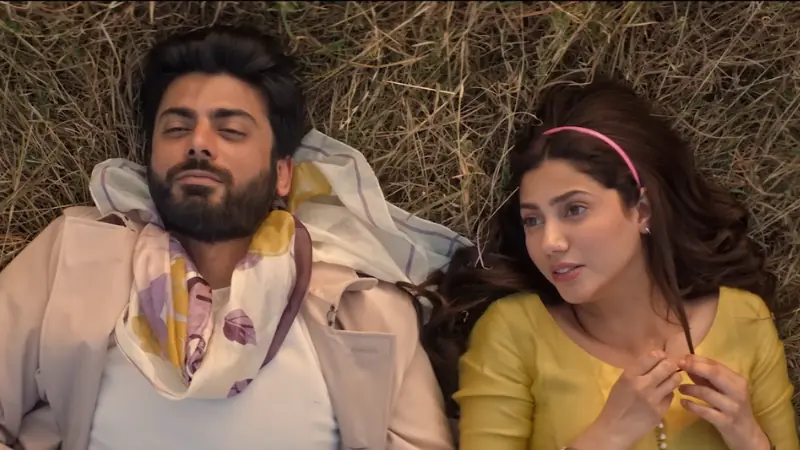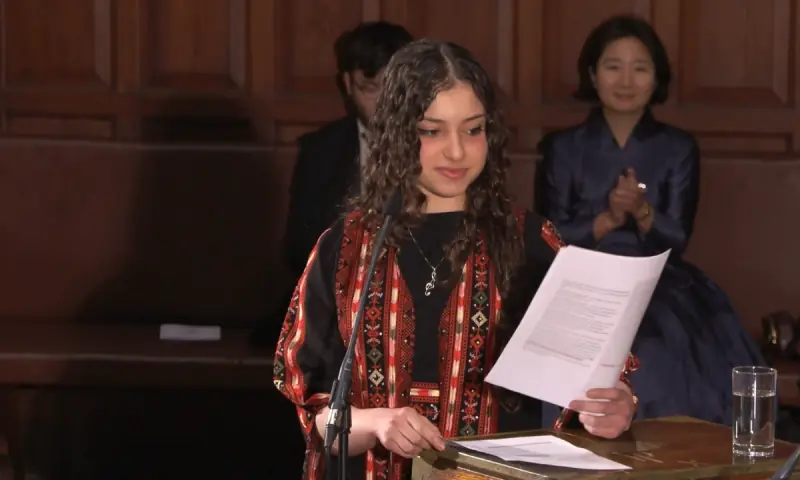Fine performances and stunning visuals make The 39 Steps a must watch
Nida Butt’s latest theatrical adaptation, The 39 Steps, presents a dreary and drab set, which jars you right at the outset.
After all, Butt solidified a fan following with her previous productions such as Chicago and Grease by putting up larger-than-life musicals with lots of colour, flamboyant characters and razzmatazz. The 39 Steps is thus a clear departure from her usual offering and a giant leap towards experimentation.
The story is inspired by an adventure novel by Scottish writer John Buchan, published in 1915. It was released in 1935 as a thriller film directed by Alfred Hitchcock. Butt’s company, Made for Stage Productions, spoofs the Hitchcock adaptation, relying on a limited cast who work in seamless cohesion. According to her, there were more people working backstage than onstage.
Richard Hannay (played by Faraz Lodhi) lives in London and finds himself in the midst of a typical spy narrative —complete with a mysterious woman with a foreign accent, and a faceless mastermind who can only be recognised by his stump finger. The femme fatale, Annabella Smith (Sanam Saeed), warns Hannay of a group of spies who smuggle sensitive information concerning the British military to its enemies. And so the protagonist is pulled into a quest of not only safeguarding the country’s secret intel but also saving himself from assassins.

Relying on only four actors, Butt gives her cast a tall order. They each play not just one character but take on different roles as the play progresses, Lodhi being the only exception. Saeed, Ali Hashmi and Zeeshan Shah change roles repeatedly, the latter two oscillating between characters even while on stage mid scene.
And then while exchanging roles all three must do so without causing any disruption in the narrative. (This interchange is done in front of the audience through the changing of hats, referencing character changes.) To top it all off, the actors must pull off British and Scottish accents convincingly.
In the two-hour production, Hashmi and Shah never let their accents slip while performing a multitude of characters. Be it two strangers on a train exchanging innuendo-filled jokes, or be they security officials on the lookout for Hanney or a Scottish couple who run an inn.
Hashmi and Shah are not afforded time for a breather; both impressively switching between roles at the drop of a hat. Sometimes this change is achieved by merely donning a robe mid-conversation with an immediate change in accent and drawl. As the play progresses they become one, making it hard to tell them apart.
Especially commendable is their characterisation as Mr and Mrs McCarrigle who run the inn where Hannay and Pamela (his incidental companion) — also played by Saeed — are forced to take shelter while handcuffed together and on the run.
With non-stop action and hardly a break for the actors or the audience, The 39 Steps could have easily turned into a trainwreck. Butt’s cast and crew eliminate this possibility.
The charismatic Saeed effortlessly slips into different roles, and one is left wanting more of her on stage. Whenever she appears, usually in a new avatar, she commands the attention of all. Lodhi as Hannay, “an all-action hero with a stiff upper lip and a miraculous knack for getting himself out of sticky situations,” makes an otherwise ungallant character likeable.
Butt intelligently uses a simple set to the best of her advantage. The props are minimalist, and this allows them to be reused and adapted whenever necessary. Boxes stacked in the first scene are utilised later on to form a bed for Hannay, while in another they are put together to make a car.
When Hannay is taken to the moors and highlands of Scotland in search for a place called Alt-Na-Shellach, he is shown entering and exiting portable doors, and his gestures and body language represent changes in the tumultuous weather. As if bracing against the biting cold wind, with bodies hunched, heads bent and shivering frames, the actors convincingly convey the weather, merely aided with sound effects sans props. Movement is given a lot of importance in the play, and exaggeratedly depicted as a means to narrate the story.

Similarly, when seated in a makeshift car, every bump on the road, sharp turn or even the screeching breaks are complemented with sound effects and heavily dependent on the actors’ non-verbal cues. Silhouettes and shadows are also used to depict Hannay being chased by aeroplanes and the aerial firing — a scene simple in execution but clever nonetheless.
With non-stop action and hardly a break for the actors or the audience, this theatrical production could have easily turned into a trainwreck. Butt’s cast and crew eliminate this possibility.
The 39 Steps is a loud production, and subtlety is not its priority. The twists and turns may not surprise a spy novel aficionado, and the play has a very predictable and linear trajectory. However, this is used to further the production quality with the focus remaining on visual execution — which is, undoubtedly, outstanding.
Originally published in Dawn, ICON, December 3rd, 2017











